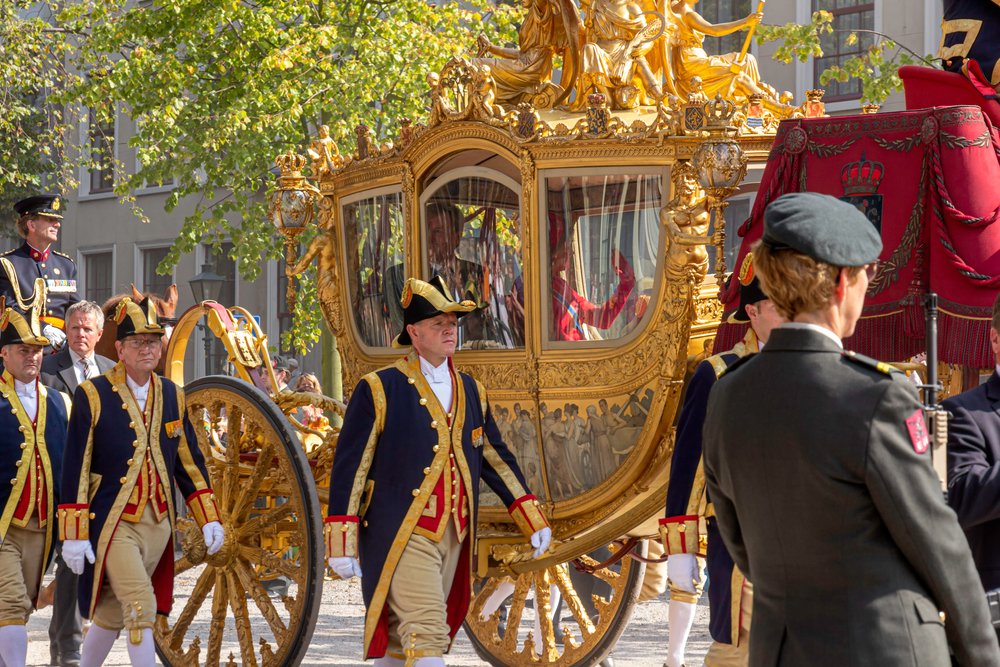King Willem-Alexander will open an exhibition about the Golden Coach in the Amsterdam Museum on Thursday. The royal carriage can be seen again after a lengthy restoration and will be in a glass room in the courtyard of the museum until February 27.
The history of the Gouden Koets is discussed in the six surrounding rooms, but the makers also extensively discuss the social discussion that has arisen about the 'colonial' panel on the side. About 25 people with various expertise and backgrounds contributed ideas about the exhibition.
The carriage was a gift from the Amsterdammers to Queen Wilhelmina in 1898. Now the Golden Coach returns to the place where it came from, according to museum director Judikje Kiers. Where the museum is now, the Burgerweeshuis used to be. The orphaned girls then embroidered the cushions of the carriage.
The Gouden Koets first drove at Wilhelmina's wedding and has since served on various royal occasions, such as investitures, weddings, baptisms and, as is tradition, on Prinsjesdag.
no longer of this time
King Willem-Alexander has to leave the Golden Coach from now on. The carriage is a symbol of inequality and no longer fits today. That says activist Jerry Afriyie, the leader of Kick Out Zwarte Piet and previously involved in the Black Lives Matter movement. The king opens the exhibition on the restored Golden Coach in the Amsterdam Museum. The carriage, of which especially a painted side panel is controversial, can be seen there for the next eight months.
Afriyie hopes that the king will say something about the future use of the carriage during the opening. “Princess Amalia withdrew from her allowance. We hope the king will also show the wisdom to renounce this symbol of inequality,” he says. “The time of submission is over. I hope that the Netherlands can see for eight months that the use of the Gouden Koets is no longer up to date. It's time we acted to make sure that slavery is no longer acceptable.” The controversial painting on the coach, entitled 'Hulde der Koloniën', also known as the 'slave panel', shows dark people from the colonies handing over products and gifts to a white young woman who represents the Netherlands.
courtyard
The carriage will remain in a climate-controlled glass housing in the courtyard of the Amsterdam Museum until the end of February. In the surrounding rooms, paintings, films and other materials explain a great deal about the history and use of the carriage. Experts from different cultural backgrounds contributed to the design of the exhibition. Afriyie would like to see the Golden Coach on permanent display in this context. The restoration of the carriage, which is made of teak covered with a layer of gold leaf, has cost 1,2 million euros. During the refurbishment, the royal couple used the Glass Carriage on Prinsjesdag for the tour to and from the Ridderzaal.
Also read: Oranges celebrate in Eindhoven on the Campus King's Day


